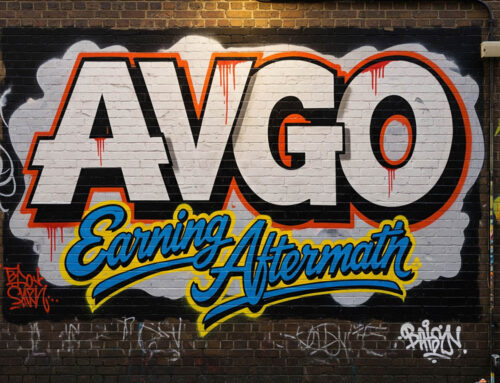SERV: Future Outlook and Investment Analysis
SERV: Future Outlook and Investment Analysis
SERV: Future Outlook and Investment Analysis
SERV is an early-stage company building and operating low-emission autonomous sidewalk robots for last-mile delivery. While I once held a significant position in SERV, I exited after NVIDIA sold its stake, which reduced my conviction. In hindsight, the company still presents a compelling long-term opportunity for investors willing to accept high volatility and risk.
Company Overview
SERV designs, deploys, and operates autonomous sidewalk delivery robots. Its business model combines service fees from deliveries, partner agreements, and potential hardware/software contracts as the company scales. Current operations focus on pilot programs and market expansions with major delivery platforms and restaurants, aiming to establish robot fleets across U.S. metropolitan areas. Market attention is primarily driven by partnerships and headlines rather than steady revenue at this stage.
Financial Snapshot
SERV is an early-revenue company. The most recent annual revenue is modest relative to market expectations, and operating losses are significant. Investors should view this as a growth story rather than a cash-generating business. Volatility is expected, and equity dilution is a possibility until unit economics improve and revenue scales.
Key Catalysts
- Distribution or platform deals: Large rollouts with partners such as Uber Eats can move the stock significantly.
- Strategic partnerships or investors: Engagements with technology partners or strategic investors validate the technology and create market excitement.
- Unit economics proof points: Metrics such as cost per delivery, robot utilization rates, maintenance costs, and regulatory approvals help transition the company narrative into measurable revenue growth.
Risks
- Execution risk: Scaling autonomous robot operations involves complex logistics; delays and cost overruns are common.
- Financing and dilution: The company will likely raise capital before reaching profitability.
- Competition: Legacy couriers, DoorDash, Nuro, and new robotics entrants may pressure margins.
- Regulatory challenges: Municipal regulations regarding sidewalks and right-of-way can constrain deployments.
- Narrative volatility: Stock movement is headline-driven; market reactions can be abrupt if partnerships slow or regulatory concerns arise.
Market Structure and Options Liquidity
SERV trades with typical small-cap volatility. Options exist across multiple expirations, but spreads may be wide, and liquidity can be thin for certain strikes and LEAP expirations. This is an important consideration if planning option positions or quick exits.
Investment Strategy
SERV is a high-volatility swing candidate. Trades should be structured around catalysts, with small position sizes. Entry points can include dips into established support levels or strength following confirmed partnership news. Single-digit percent allocations of the portfolio are recommended due to potential drawdowns.
LEAP Opportunities
Long-term equity anticipation securities (LEAPS) can provide leveraged exposure to SERV’s growth thesis while limiting total capital risk. LEAPS may be particularly useful for investors who believe in the company’s ability to scale robot fleets and secure major distribution deals within 12–24 months.
Possible LEAP Strategies
- Long LEAP Call: Pure bullish exposure; recommended at small portfolio allocation (1–2%).
- LEAP Call Debit Spread: Reduces upfront cost by selling a further out-of-the-money call; caps upside but lowers risk.
- Long LEAP + Short Near-Term Calls: More advanced; uses short-term call premiums to offset LEAP cost. Requires active management.
- Cash-Secured LEAP Puts: If long-term equity ownership is desired, selling LEAP-dated puts collects premium but ties up capital and carries assignment risk.
Entry Checklist
- Confirm options liquidity and spreads for selected strikes and expirations.
- Determine investment horizon: 12, 18, or 24 months.
- Limit position size to a small portion of the portfolio.
- Predefine exit points: successful trials, partnership validation, failed deployments, or dilution events.
Monitoring
- Deployment announcements and city rollouts.
- Partner updates with major delivery platforms or restaurant chains.
- Monthly or quarterly revenue and unit economics reports.
- Strategic investor activity and insider moves.
- Options open interest and implied volatility for LEAP or income trades.
Conclusion
SERV is a speculative, high-volatility investment suited for swing traders or LEAP buyers focused on narrative-driven small-cap opportunities. Position sizing should remain small, and trades should be aligned with observable catalysts. For investors seeking asymmetric upside without full equity exposure, LEAP call debit spreads offer a balanced approach. Personally, I consider SERV a candidate for my Baby Roth Challenge due to its combination of promising growth potential and high risk, warranting a cautious, small-sized allocation.
Whether you’re just getting started or leveling up your game, Woof Streets is where traders learn, grow, and hunt — together.
We’re a Discord trading community built on trust, transparency, and real results.
We’re a fast-growing community of traders, analysts, and market junkies who know that the best setups don’t bark… they growl. Whether you’re here to learn or to ride the waves with a loyal crew, you’ve found your pack.






